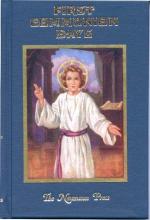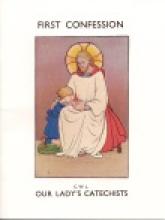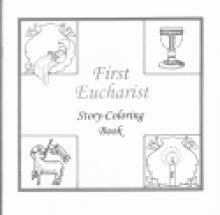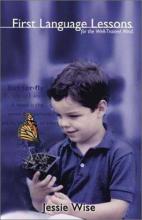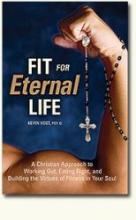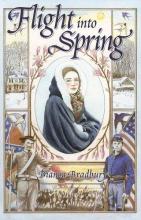No name
First Communion Days
This book consists of twelve true stories of children preparing for and receiving their first Holy Communion.The stories are sweet and inspiring and present many fine examples of real devotion to the Blessed Sacrament and how real children themselves made their hearts ready for Jesus. Some of the stories are of "little saints" who always strove to do what was right, while others involve children who struggled to overcome tempers, selfishness and other temptations. Two particularly touching stories are about children who received their first communion on their death bed. This would make an excellent supplement for your child's First Communion preparation. It is just this sort of book which helps the child's Catechism studies "come alive".
First Confession
Companion to First Communion from Our Lady's Catechists.
In twelve lessons, this little book teaches everything that an elementary-school-aged child needs to know to prepare for a holy First Confession. The text is written in the second person, for the teacher to read to the student, and assumes no exceptional degree of teaching experience. Most of the lessons use short stories to illustrate the point being made. A homeschooling parent can simply pick up the book, sit down with their student, and spend their lesson time comfortably and profitably.
Lessons describe what sin is, how sins are taken away, how to stir up contrition, how to tell our sins and make satisfaction for them, how to identify our sins, as well as how to avoid sin. Also included is the correct manner in which to confess and short prayers for before and after confession. The prayer pages are designed for the student to read and are printed in a larger font with a simpler vocabulary. The penultimate page is titled "Revision", but the more familiar American term is "Review". This page contains a complete review with answers that is more concise and direct than memorizing lengthy catechism questions. The inside back cover includes teaching notes for several of the lessons. In use for nearly fifty years, the information and teaching style of this book is timeless and applies equally well to our modern times. Charming full-color illustrations appear throughout the book.
First Eucharist Story-Coloring Book
This book presents a beautiful way to introduce children to the mystery of the Holy Eucharist. The text is adapted from The Child in the Church by Maria Montessori. The story on each page presents fodder for discussion as the child colors in the beautiful borders which are rich in Catholic symbolism. My daughter loves to have me color with her - so we've colored in the pictures together as we discuss the content. Also included are information on how to use the book, explanations of symbols, and questions to help in discussing each page.
First Language Lessons for the Well-Trained Mind
Intended for use in first and second grades, the 200 completely-scripted lessons in this textbook are a complete guide in "How to Teach English to Young Children". The non-consumable book is actually a textbook for the teacher rather than the student. Lessons are completely secular and include portions of classic poems, stories and rhymes. Also included are original poems and stories as well as a few selections that have been adapted for young children. Pictures are black-and-white line drawings rather than photographs or color reproductions.
Each day's lesson is taught to the student, interactively, utilizing no workbooks or photocopied worksheets. The teacher is an integral part of this course, which combines direct instruction with regular drill and review. First grade lessons are almost completely oral with a Montessori-feel to them. Montessori classrooms use a repetition technique that has been applied to the lesson scripts when a new concept is introduced to the child. The course begins with very simple, very short lessons and builds into longer lessons with very short copywork assignments by the end of the year. Second grade lessons incorporate more pencil-and-paper writing, with some written copywork each day. Composition exercises are oral throughout, focusing on narration from short stories, poetry, and pictures. Poetry memorization selections are short and rhyming, which should make it enjoyable for most students. In addition, many lessons include enrichment suggestions for students who find their lessons comfortably easy. A variety of activities keeps the student engaged from the beginning to the end of each day's lesson and from week to week throughout the course.
In the introduction, Mrs. Wise writes, "I believe we underestimate what young children are capable of learning. We can grow children who exceed the average by exposing them to above-average content––-as long as that content is taught patiently, frequently, and consistently, and is reviewed often." There are educators who think that formal grammar and language study is more suited to later elementary school, but Mrs. Wise shows us how to make English class both productive and enjoyable in the earliest years. An excellent, early foundation in English can provide the necessary background for deeper study in following years as well as foreign language study in elementary school. This book gives the teaching parent everything (s)he needs to provide that foundation.
The very first lesson in first grade is completely oral and introduces the concept of a noun; it takes less than 10 minutes to complete. The early lessons in second grade include an oral teaching part, a written copywork part, drill and review, and poetry memorization. There is a distinct change from the beginning of the book to the end. Some lessons focus completely on picture study (oral composition), and others are just poetry study.
The lessons include both picture study and narration. I didn't find the pictures especially inspiring, but they are "family-type", "everyday-situation-type" of drawings set in current times. I thought the most valuable part of First Language Lessons was that it teaches the mother HOW to get the most out of a picture study by providing a lengthy list of guiding questions. It should be easier for a mother new to this idea to branch out to other pictures after gaining some experience and confidence.
Fishers of Men
DVD
Fit for Eternal Life
Five In a Row - Literature-Based Unit Studies for young children
The Story of Ping by Marjorie Flack:
On Monday after reading the story you give a Social Studies lesson. We found China on the world map, and the Yangtze River. The curriculum guide points out that the Yangtze is the 3rd longest River after the Nile and Amazon; locate those on the map. Nearly one third of China's population live on or near the Yangtze River, in fact 1 of every 15 people in the world live along the Yangtze River. The children color a story disk (small picture of Ping) and place it on the world map along the Yangtze River. I expanded this to also making the flag of China from construction paper, discussing Chinese food, going to a Chinese restaurant and eating with chopsticks, and had the waiter speak Chinese and sign our placemat in Chinese. Another lesson under social studies is the lesson of discernment. The child is asked to describe Ping's lesson about discernment: " everything that looks good is not necessarily good". We went on to discuss never taking candy from strangers, whether they should go along with friends' decisions even if it doesn't seem quite right and how mom and dad help train good decisions, sometimes even with a spank like Ping received.
On Tuesday, after reading the story, you teach Literature: define a classic, find the publishing date, explain that the Story of Ping was written when your Grandmother was your age. The authors suggest starting a Literature notebook with a section for literary terms, and a section for vocabulary, (using index cards is the alternative suggestion). Define and write the definition of a classic and fiction in your notebook. Teach the literary device of repetition and show how it is used in the story, bringing it "full circle". Add repetition to your notebook. We expanded this to adding the title of other books we had read under each definition, which qualified as an example.
On Wednesday, after reading the story, teach art. What medium does the illustrator use? (colored pencils) Use colored pencils to draw your favorite illustration. Learn to draw water. Look at how the illustrator draws the suns reflection on the water and try it. Learn to draw water movement around an object in the water, growing concentric circles, and try it. Create the illusion of motion in the water with squiggly lines trailing behind the boat and practice it. Teach about viewpoint. The illustrator uses viewpoint (and they point out examples throughout the book) and how this changes how we see a scene or the world around us. Teach composition and the author again points out examples of good composition with illustrations throughout the book.
On Thursday, after reading the story, have a Math lesson counting Ping's sisters, brothers, aunts and uncles. [math in this program is too contrived to stand alone]. I also have the Christian supplement to FIAR so we did that here. This gives 2-4 scripture verses or bible stories which parallel the FIAR story and give a great basis for more discussion on character training, godly behavior, etc.
On Friday, after reading the story, teach science. Concepts related to this story are...where are ducks placed in the animal classification system, bouyancy, health and safety concerning water (children are not bouyant like ducks!), and reflection of light off water. The author suggests other literary imagery of reflection in the poem "The Mirror" in The World of Christopher Robin (Milne), which one could use as memory work or copywork.
We never spent just one week on most stories. I think this book ended up being 3 weeks long because we chased down bunny trails to study China in more detail, bouyancy and experiments took several days and learning more about ducks, their habitat, diet, etc. was a week. We culminated the week with a trip to the duck pond and decided it was a good idea to start swimming lessons.
The author of FIAR has chosen solid children's literature. My only critique is that some books are out of print and a little difficult to find. The FIAR web site used to sponsor a list for people interested in using this guide. People would share ideas on expanding the books, resources, and trade/sell each other some of the harder to find books. Each FIAR volume contains lesson guides for about 16-20 books. The authors have also written a preschool version called Before Five In A Row and a Beyond Five In A Row, using chapter books. I believe booklists for each of these volumes is available at their web site.
How is this helpful for Catholic homeschoolers? Well, it is one way to introduce children to tried and true, good children's literature. It has taught me a whole lot about analyzing a story and illustrations. It is a great method for teaching story composition, introducing new vocabulary, and isolating literary devices. I recommend it whole heartedly to the Pre-Grammar stage, for developing attentiveness to details, introducing them to art, geography, science and reviewing math skills.
Also, the guide is user friendly. Anyone who has enlisted the help of an older child to help teach their younger children could hand this to a 12+ yo and they could probably manage fine, as well as learn some new things, as I have!
Flight into Spring
This is a sweet, but challenging story about a 16 year old girl from pro-Confederate Maryland who marries a Union soldier from Connecticut just after the Civil War. The story presents the conflicts of hard feelings and the need for healing between North and South in the context of family relationships. It seems quite unusual as stories usually lead up to an unknown "happily ever after." Here, the emphasis is on this young bride's married life. Cultural and religious differences as well as bitterness from the war make life quite difficult for this young bride living with her husband on his parents' farm. The story makes an interesting backdrop to consider ideas about developing relationships, the give-and-take necessary in marriage and the idea of love and commitment. Appropriate for ages 12 and up.
Flower Gardening for Our Lady Chart
These are reprints from 1947-1955. The pictures and text are very "old-fashioned". For members of a Tridentine Mass community, these can be very handy. All of the references to the Holy Mass and liturgical season refer to the Tridentine rite and the old liturgical calendar.

